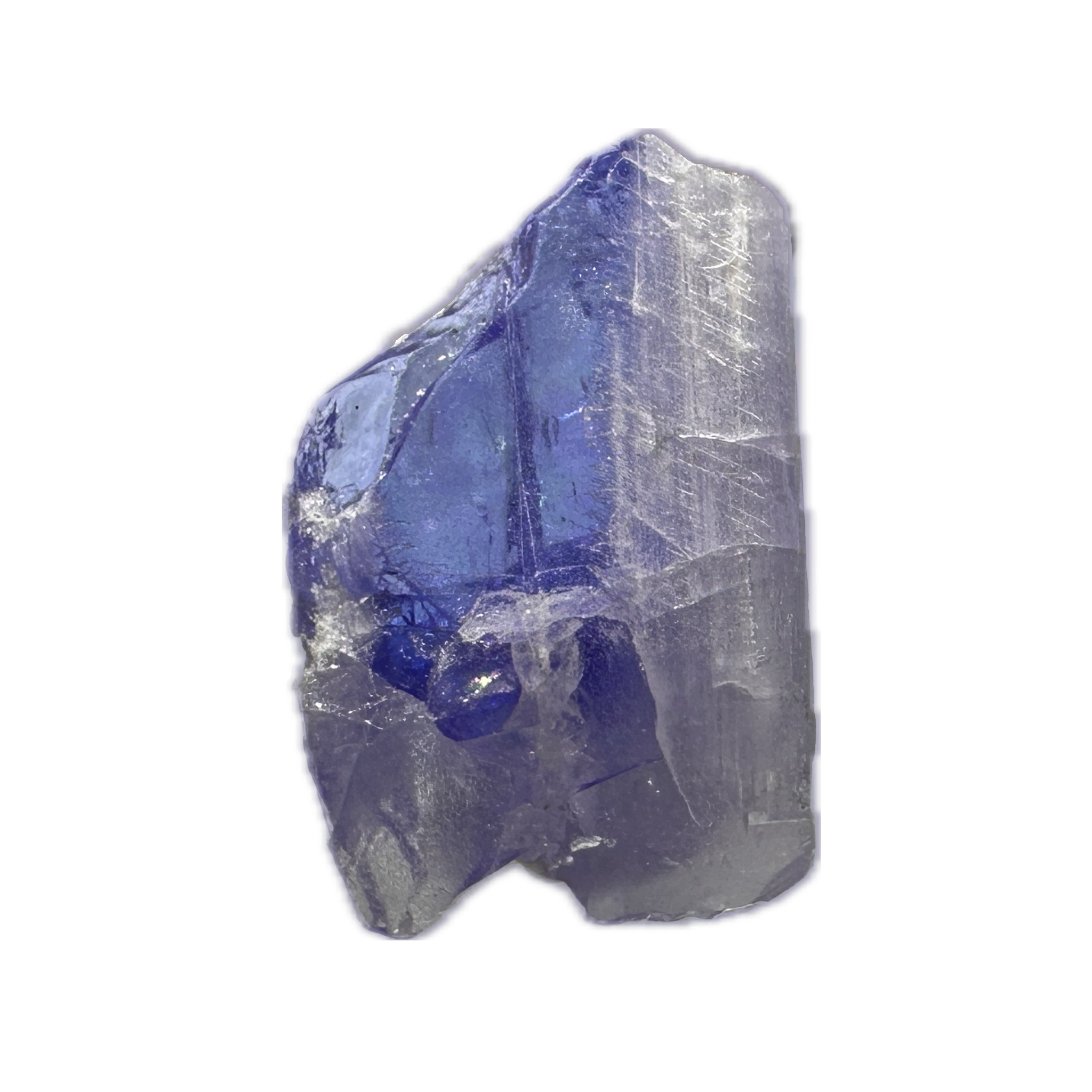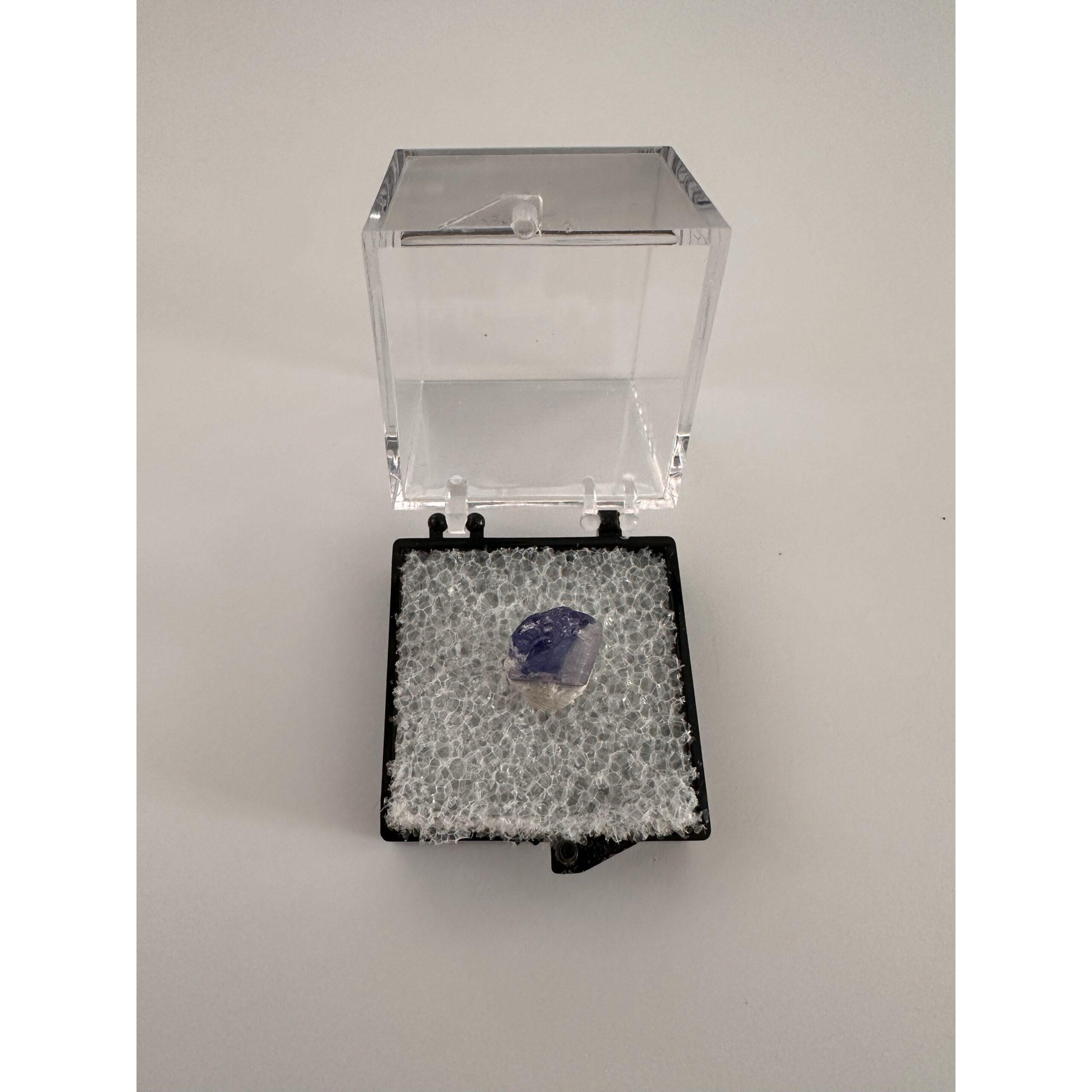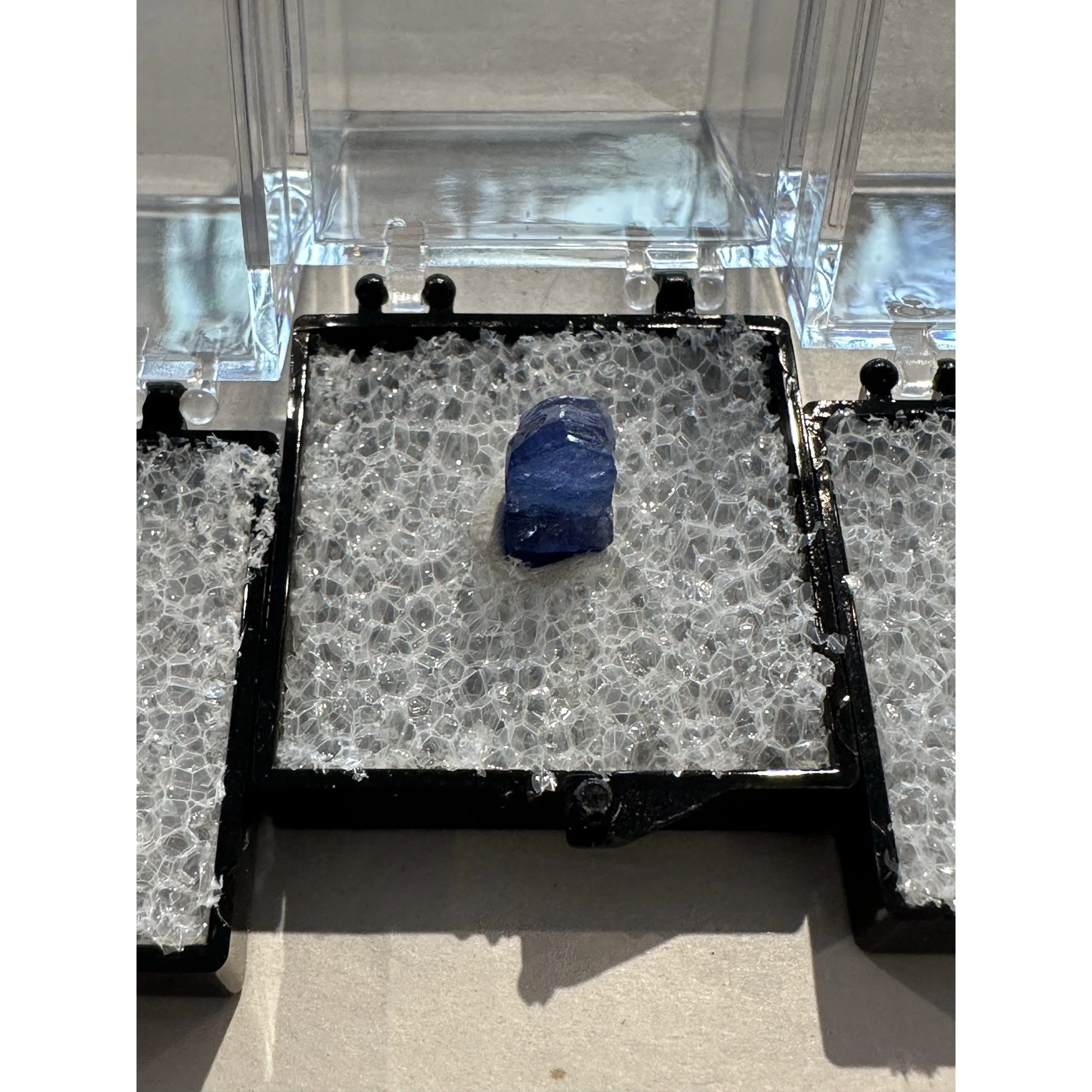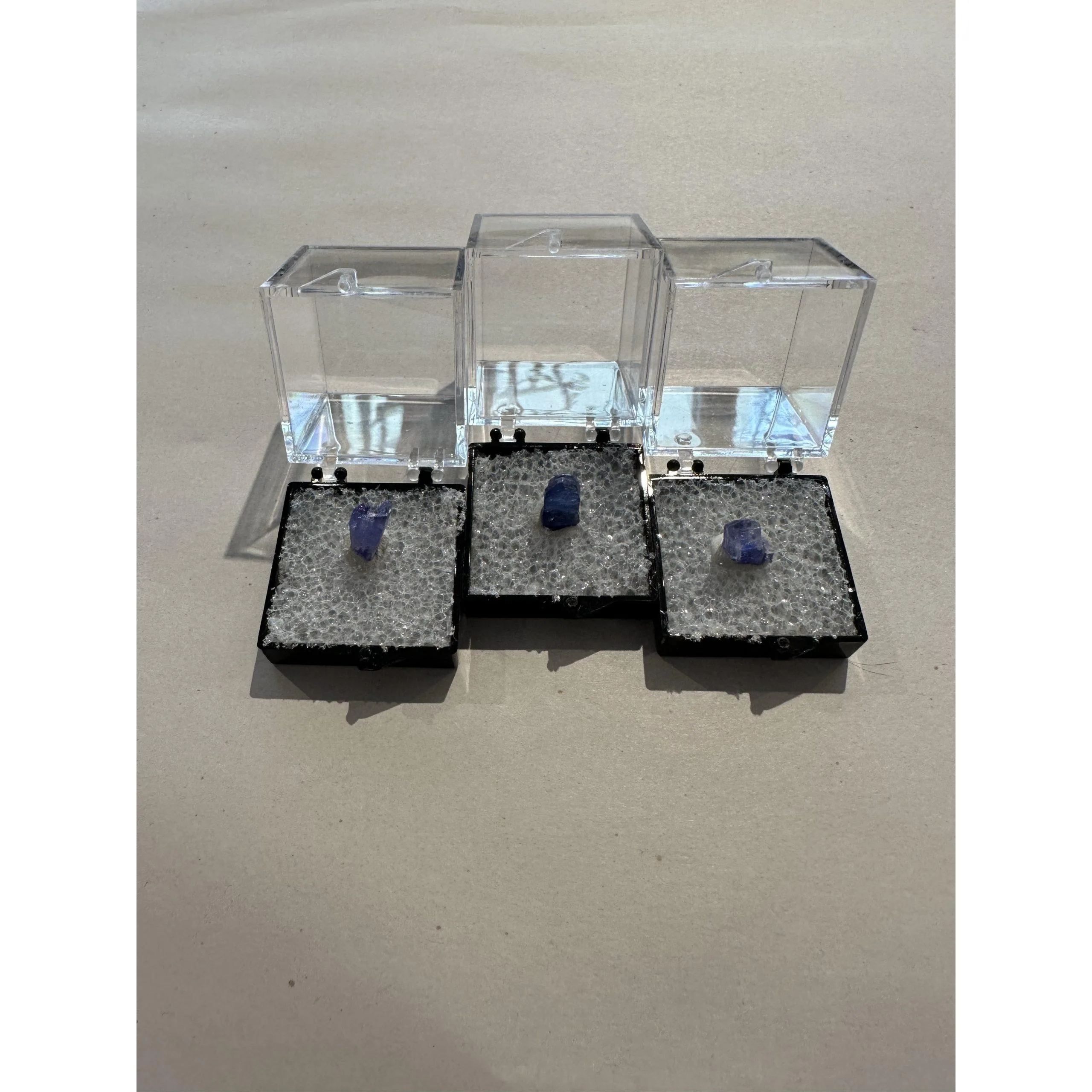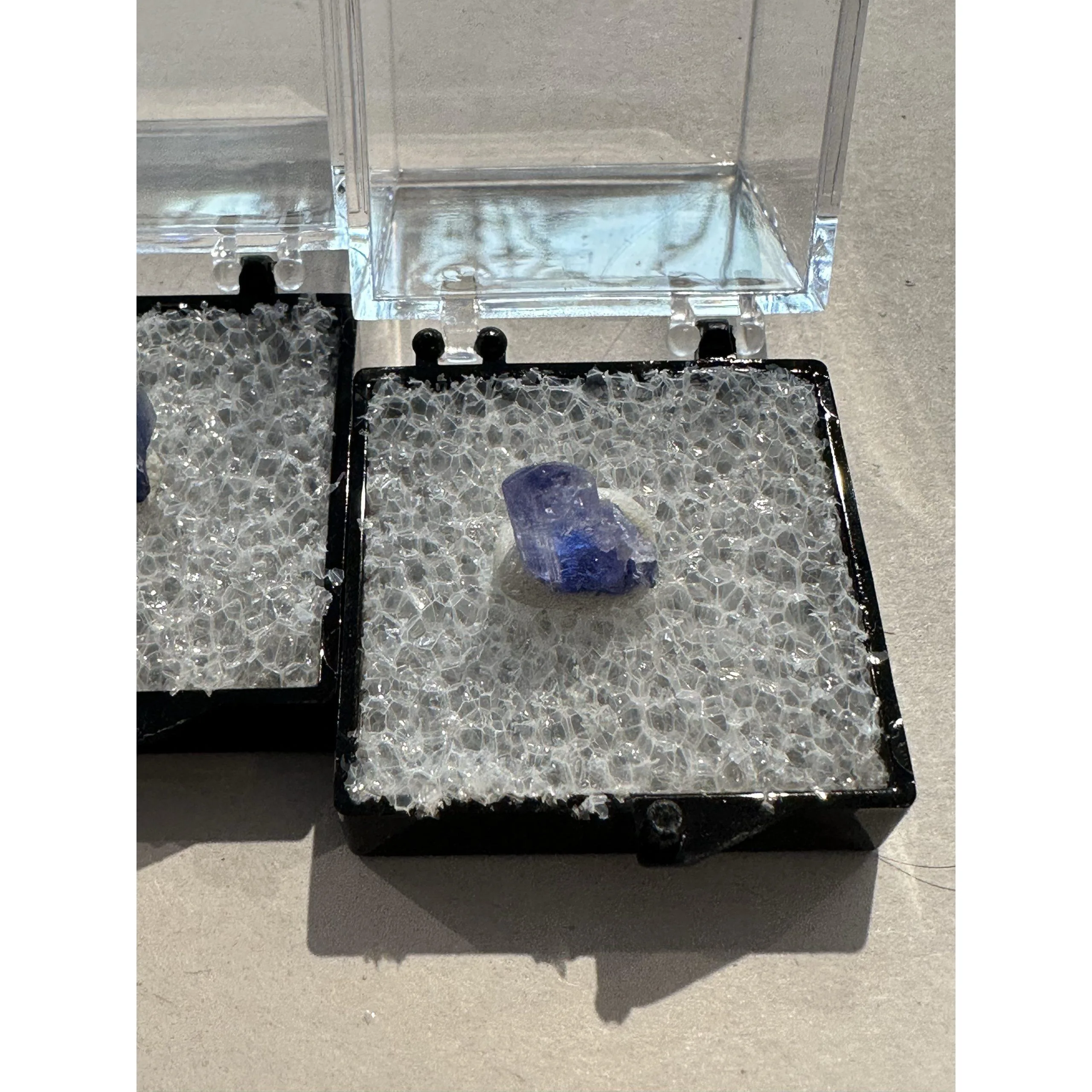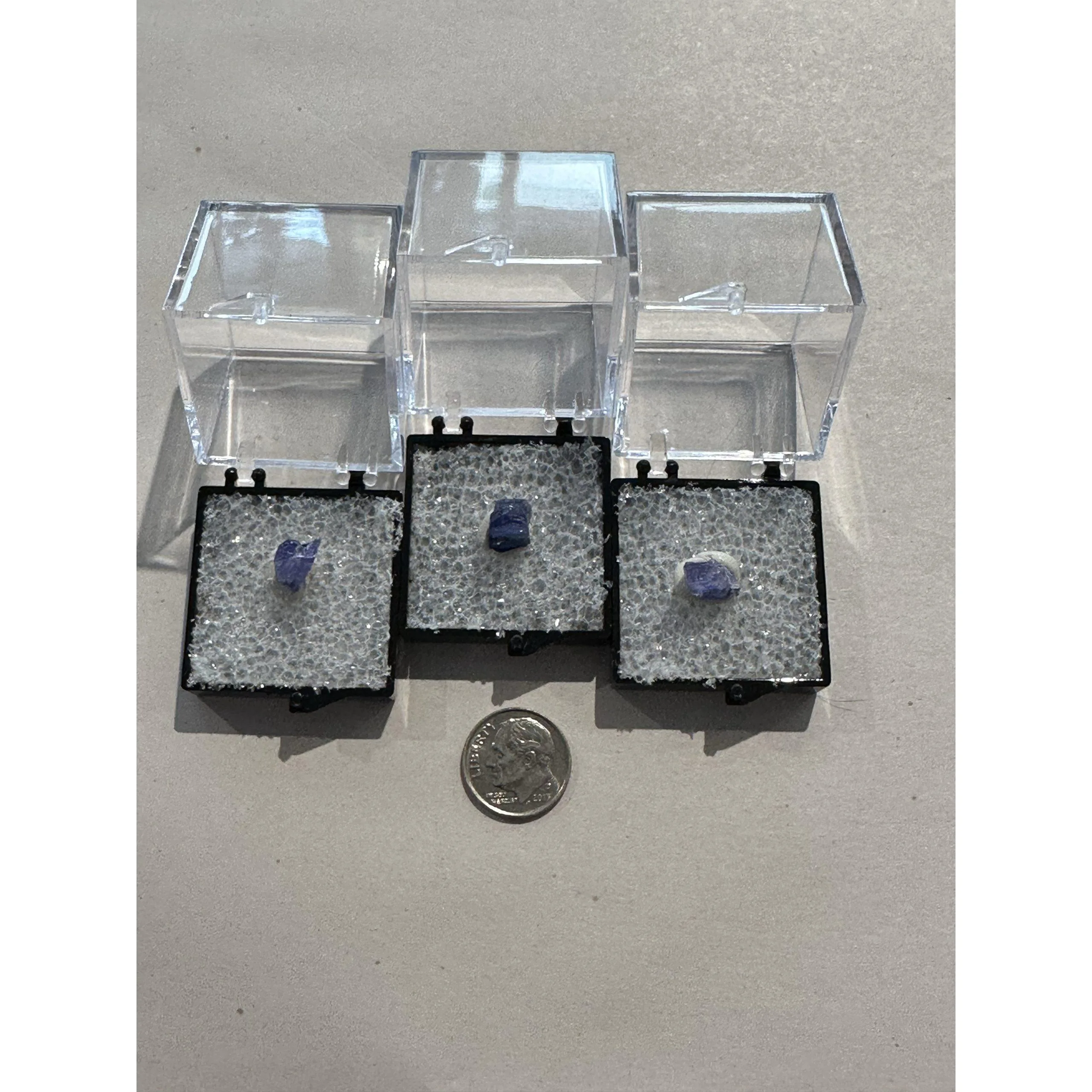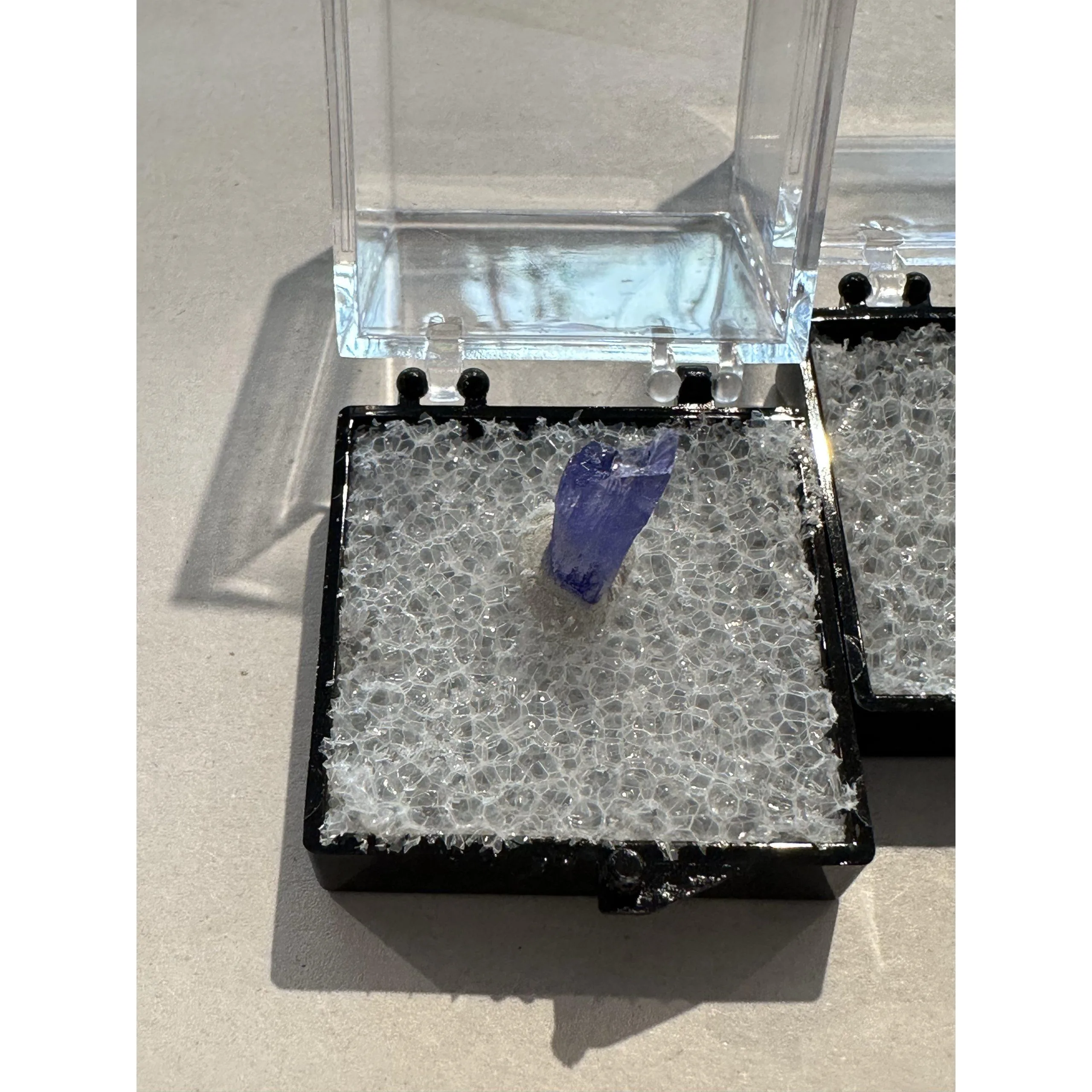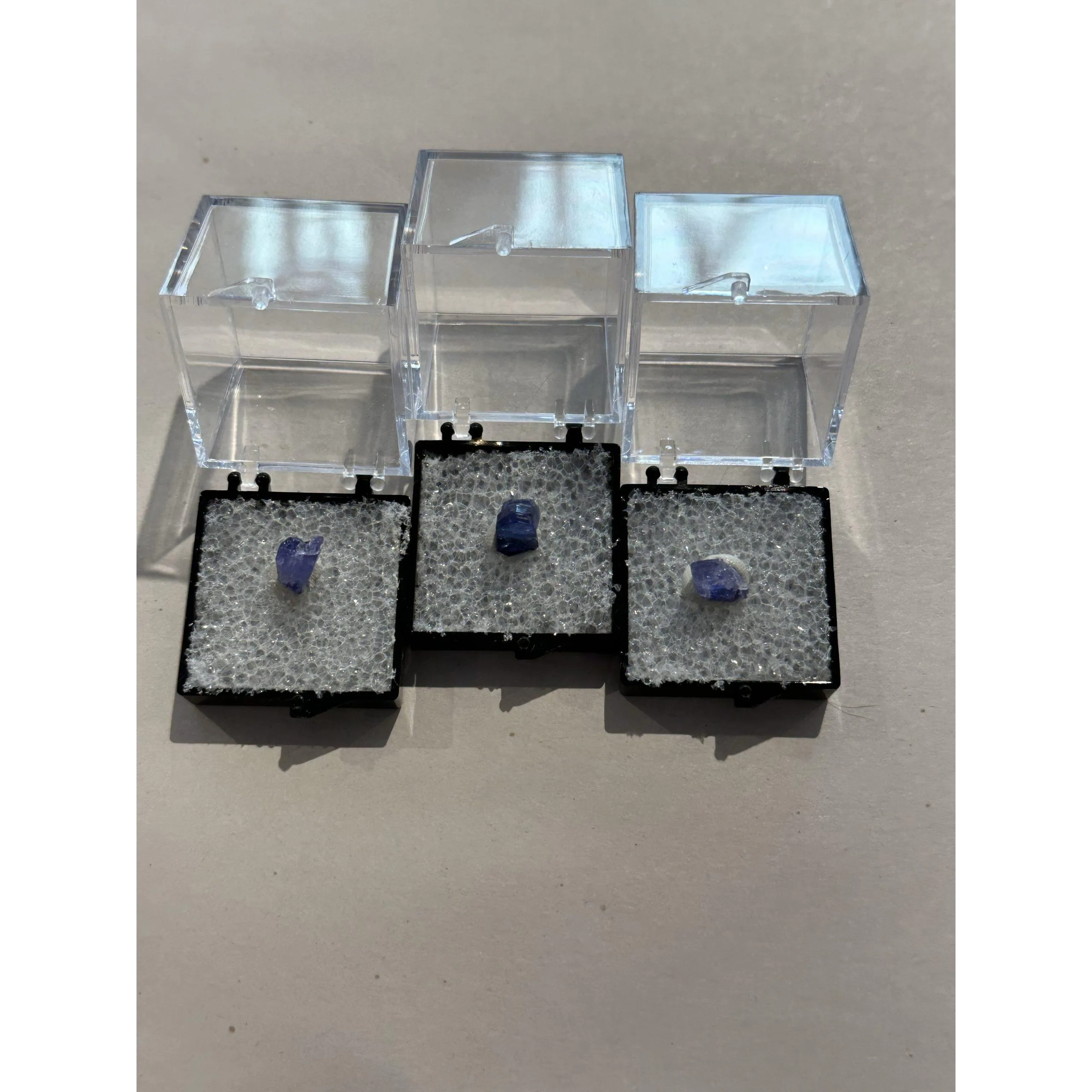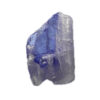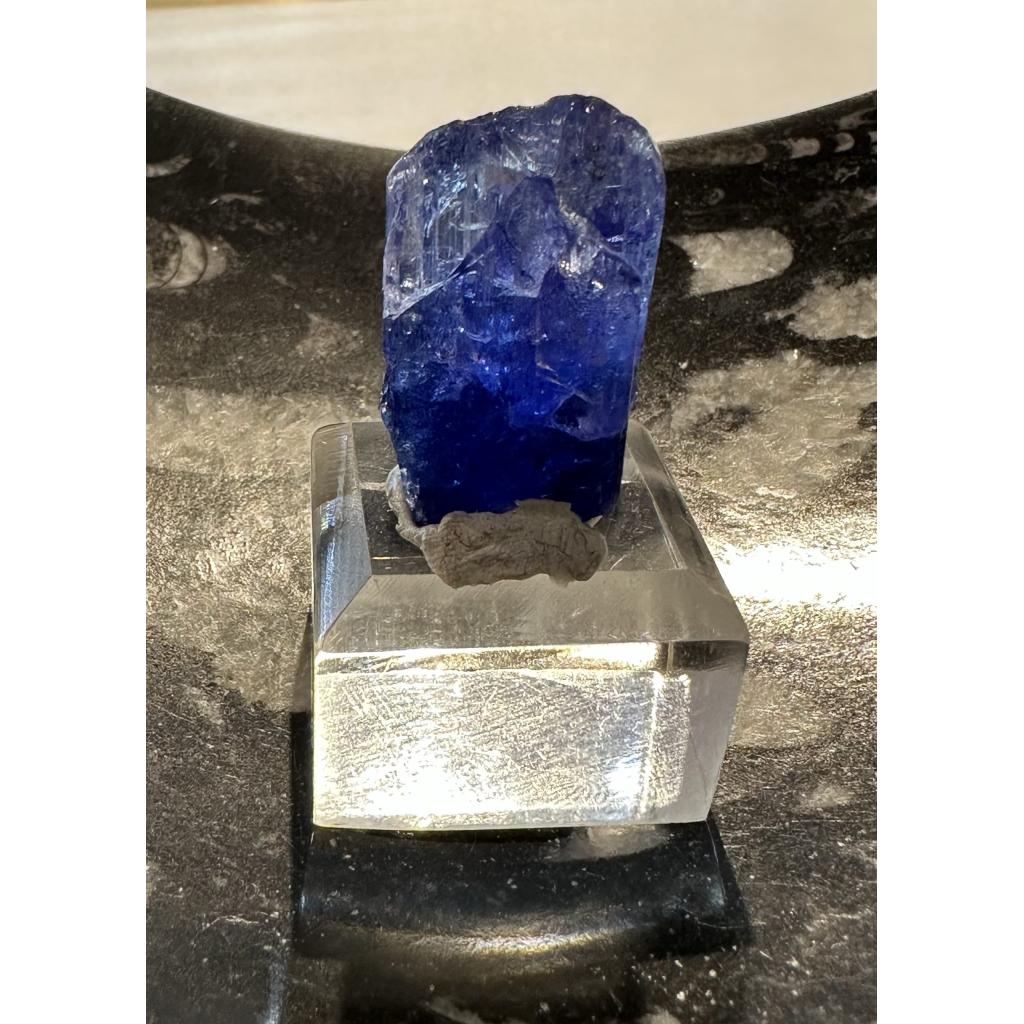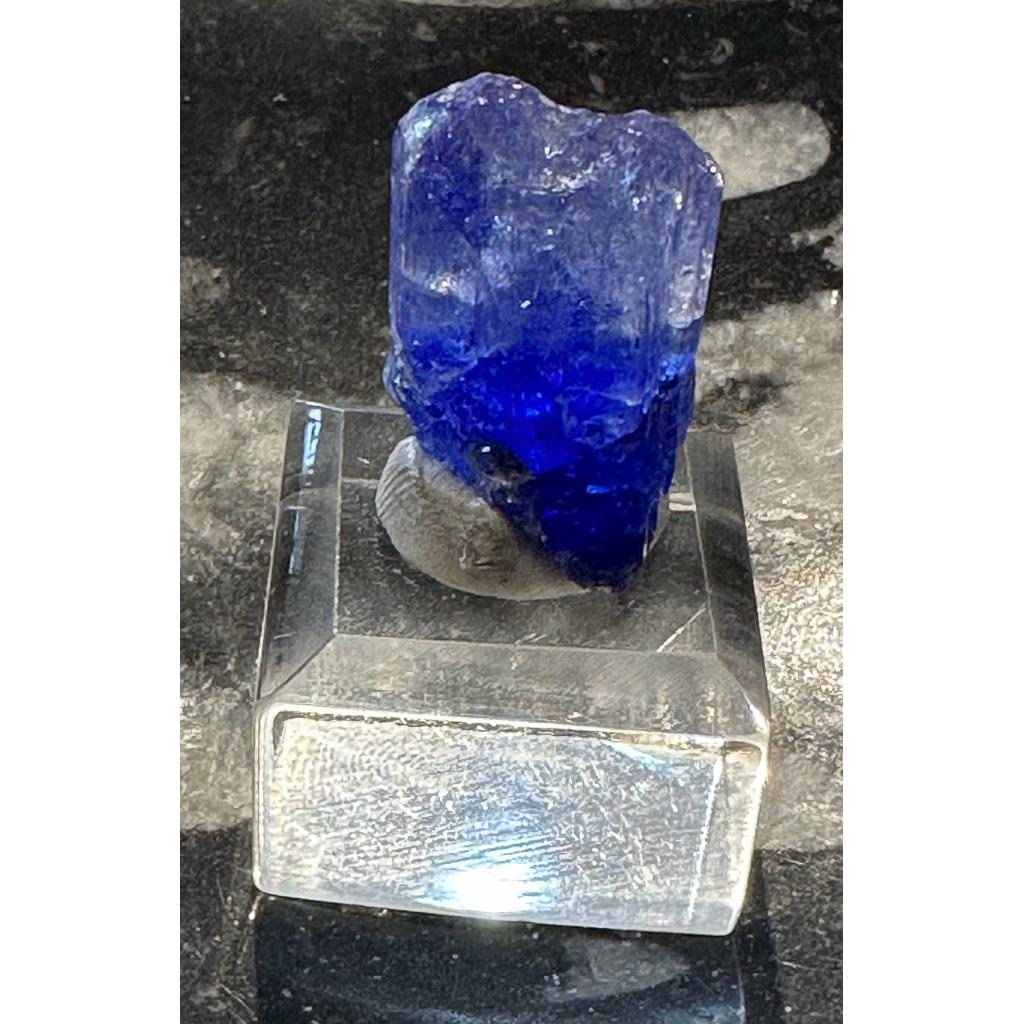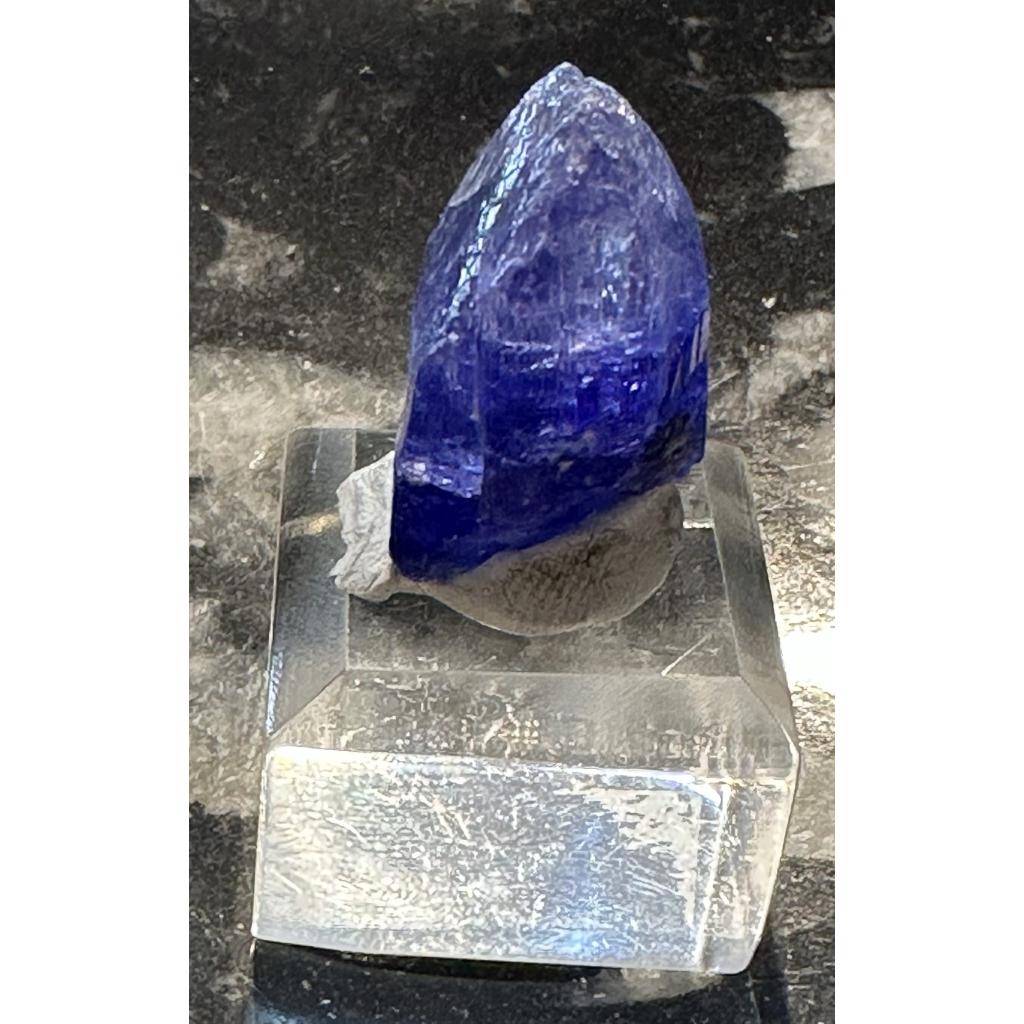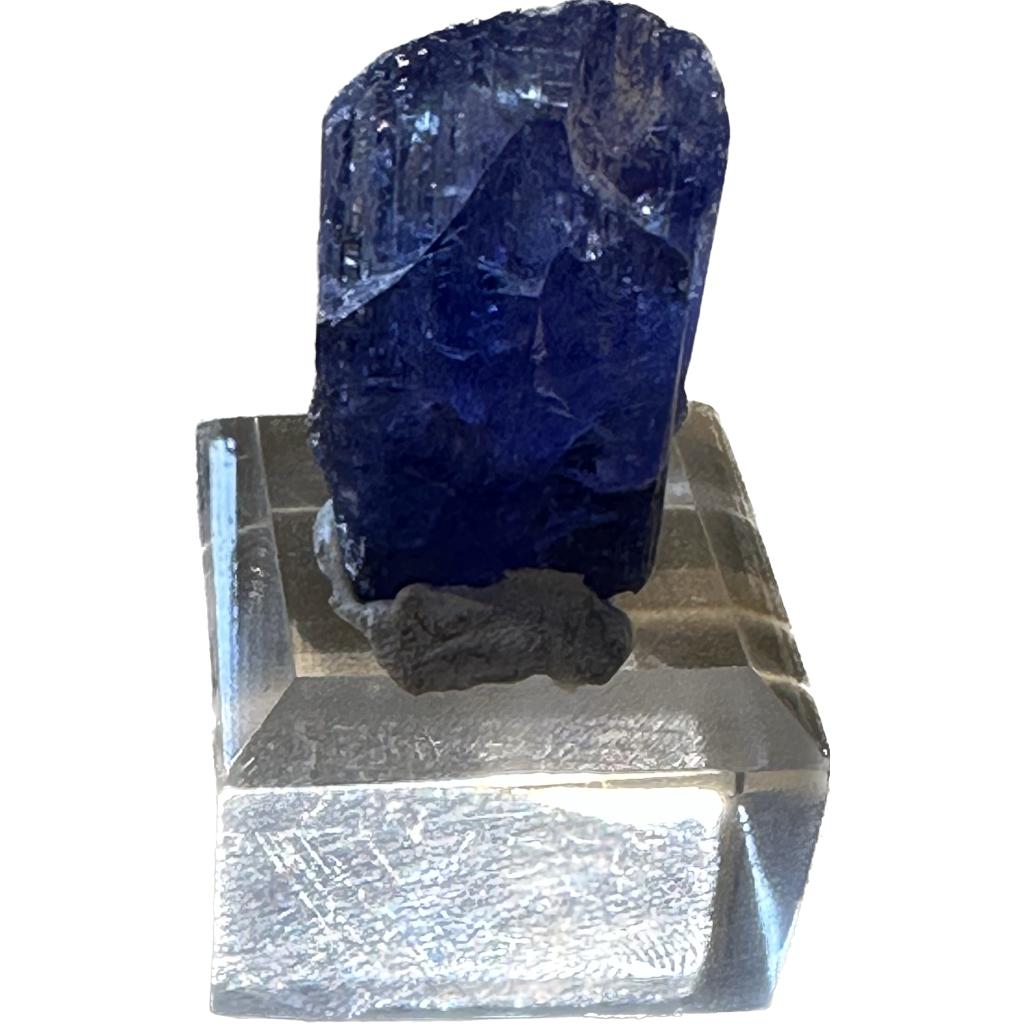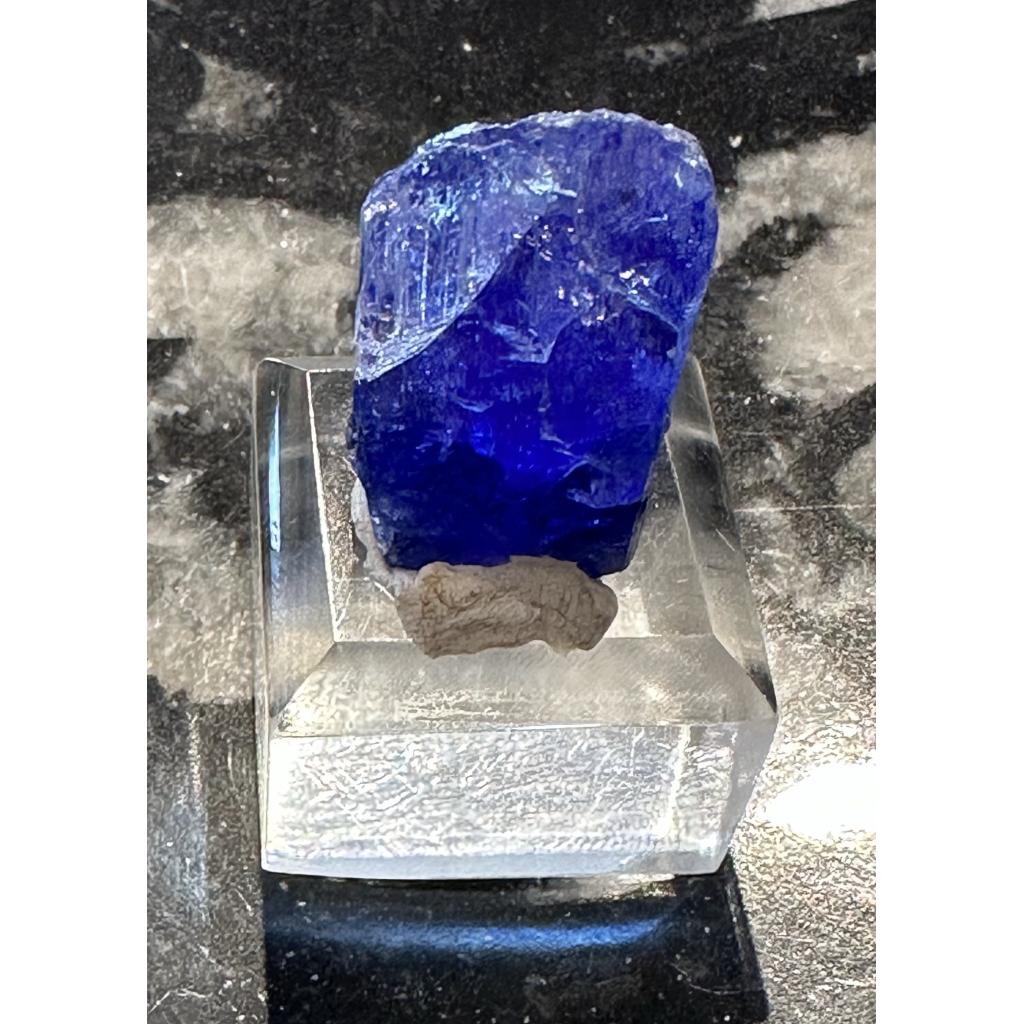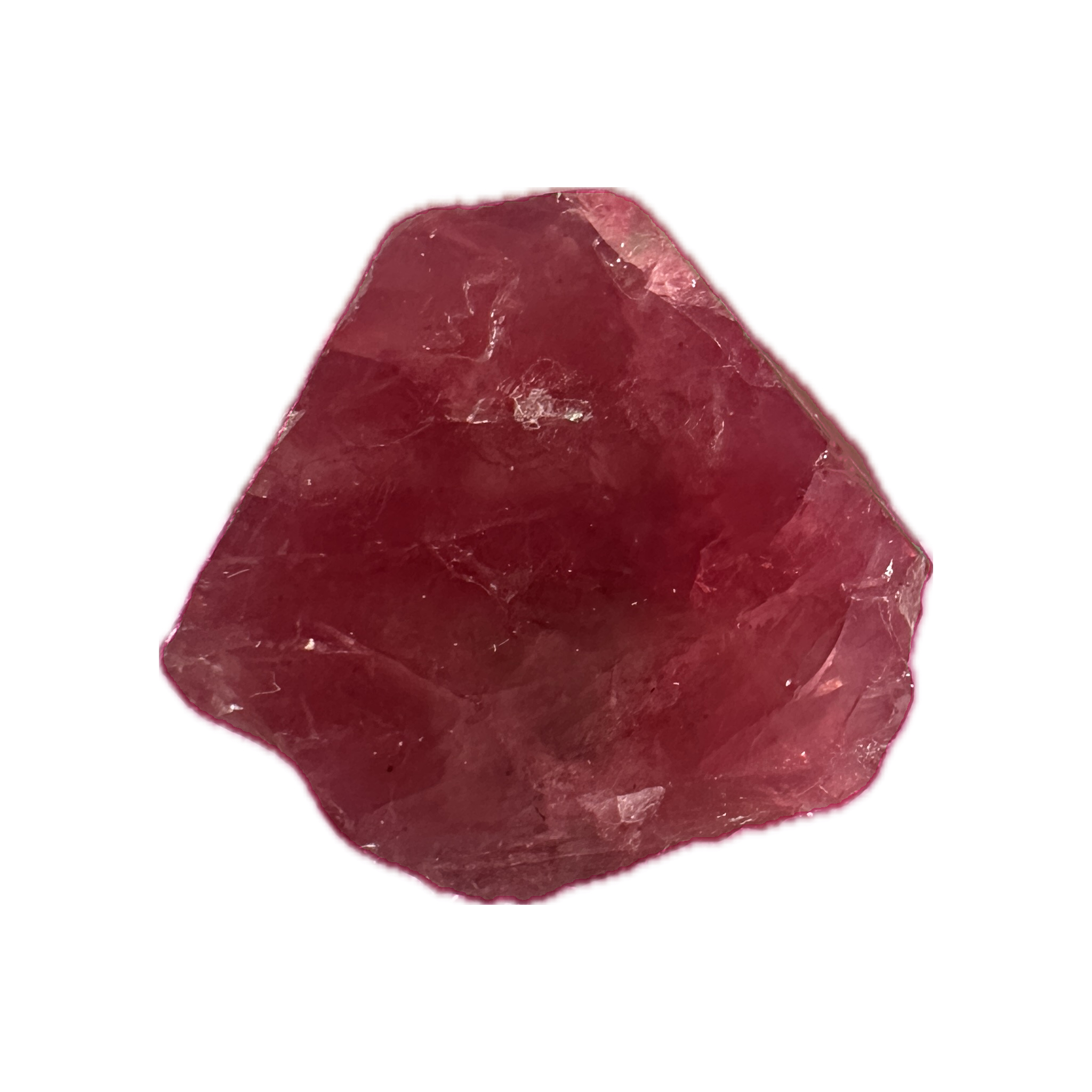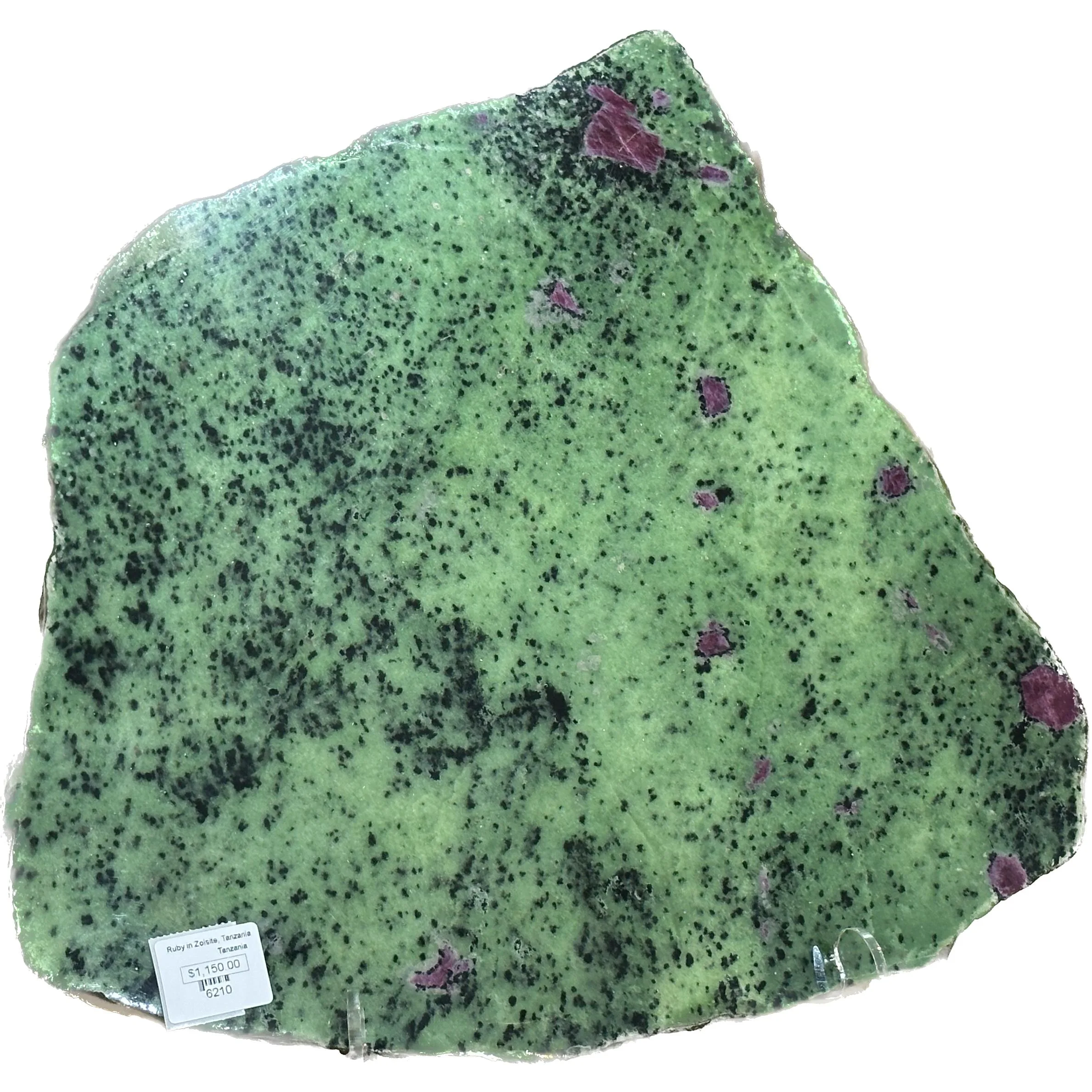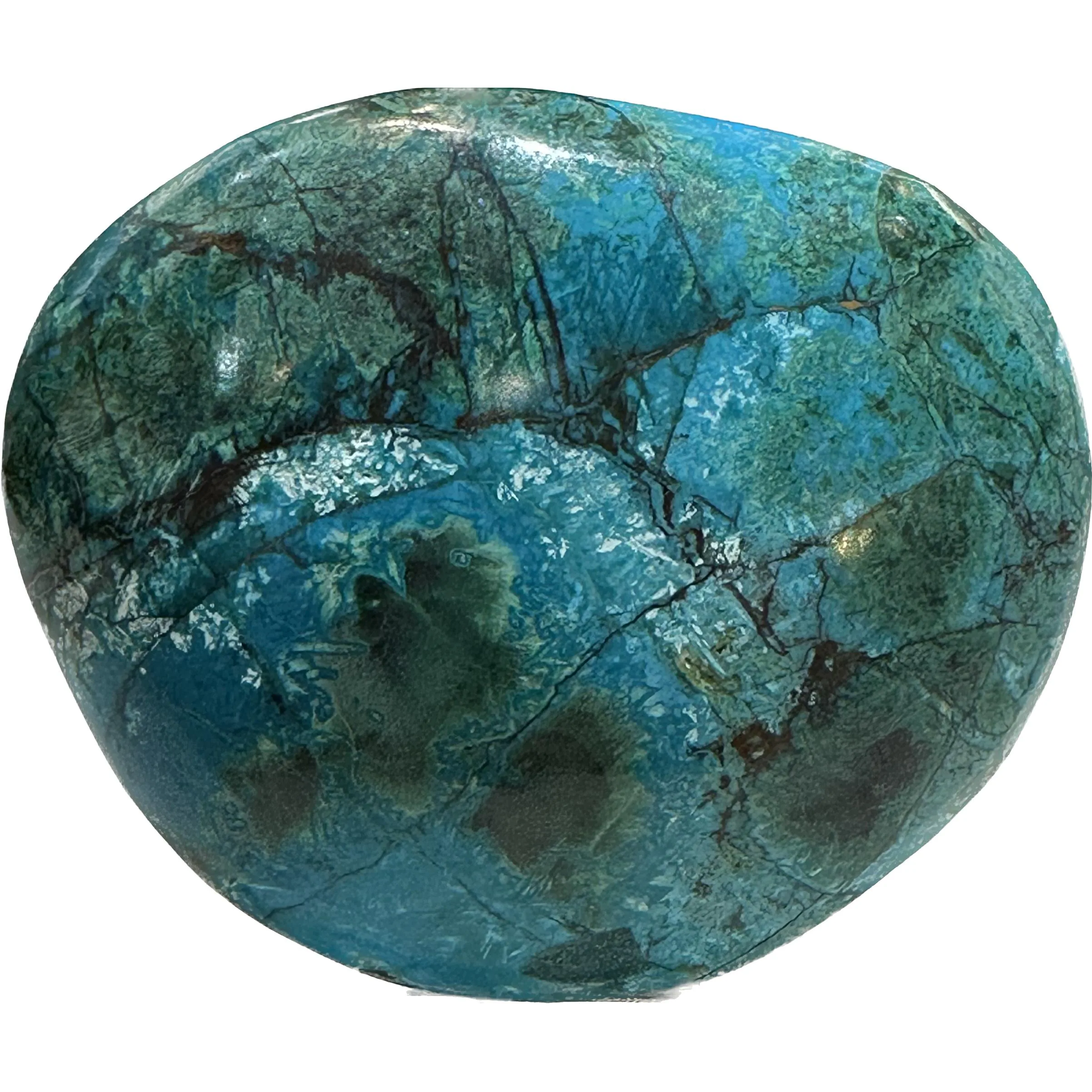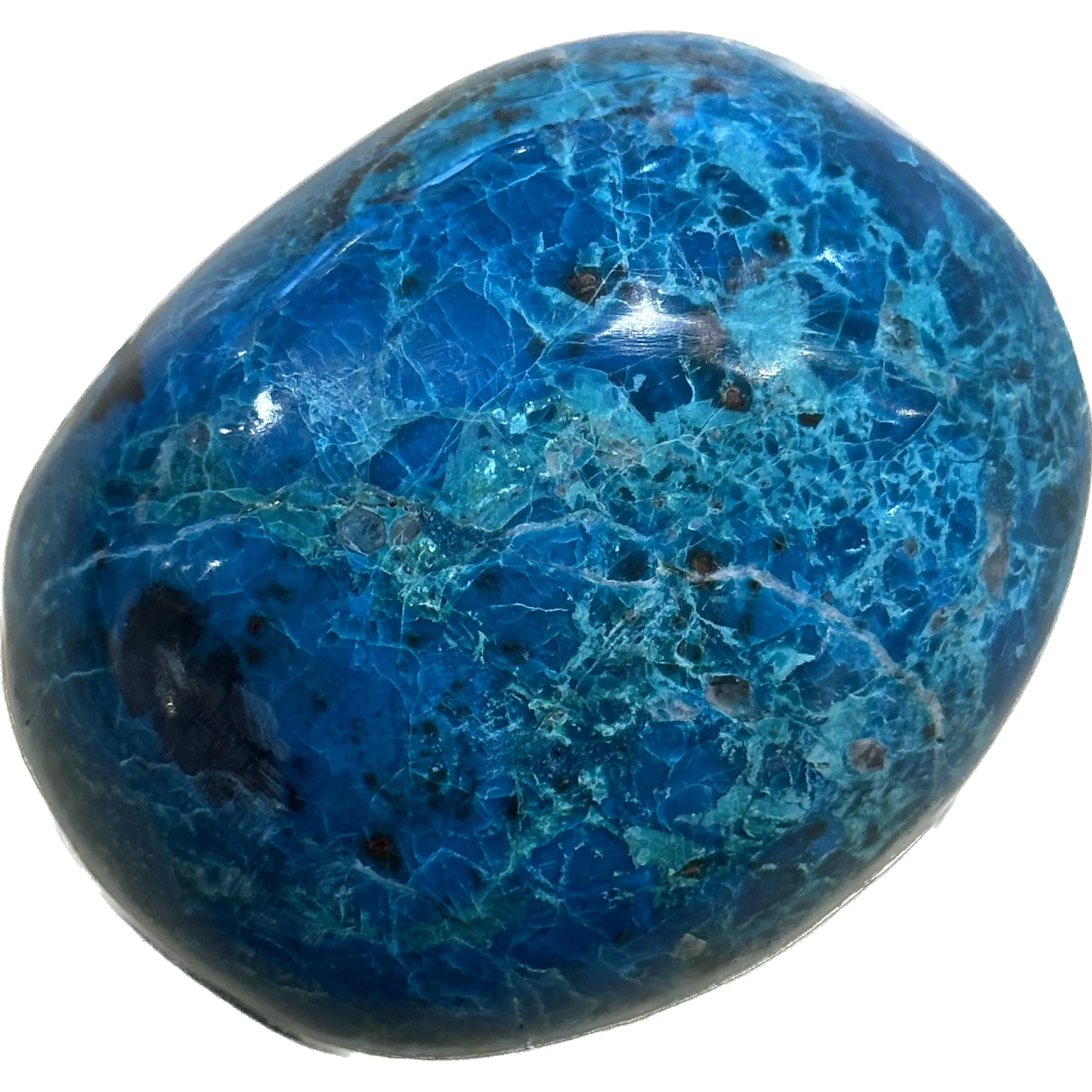Tanzanite crystal, Tanzania, Africa. This natural tanzanite crystal is a beautiful violet color. This thumbnail crystal measures approx 1/2″ in height.
Tanzanite is a captivating gemstone renowned for its mesmerizing blue-violet hue and intriguing geological origins. Discovered relatively recently in the 1960s, tanzanite quickly captured the attention of gemstone enthusiasts and collectors worldwide due to its rarity, beauty, and unique color-changing properties. In this exploration, we’ll delve into the fascinating world of tanzanite minerals, tracing their journey from formation to market and exploring their cultural significance along the way.
Tanzanite belongs to the zoisite mineral species and is scientifically known as blue zoisite. What sets tanzanite apart is its distinctive blue-violet color, which is caused by the presence of vanadium, a trace element in its crystal structure. This unique coloration, ranging from pale blues to deep purples, is enhanced by heat treatment, a common practice in the gemstone industry to improve color and clarity. Through controlled heating, tanzanite’s blue-violet hues become more pronounced, creating the vibrant gemstones coveted by collectors and consumers alike.
The geological story of tanzanite begins in the Merelani Hills of northern Tanzania, near the base of Mount Kilimanjaro. It was here, in 1967, that a local Maasai tribesman stumbled upon transparent blue crystals eroding from the earth’s surface. Recognizing their potential value, the discovery soon attracted the attention of Manuel d’Souza, a tailor-turned-prospector, who realized the significance of the find and began mining operations in the area. This serendipitous discovery marked the birth of the tanzanite industry and the subsequent rise of Tanzania as the world’s primary source of this exquisite gemstone.
Geologically, tanzanite owes its existence to a rare combination of factors. It is formed through a process known as metamorphism, wherein intense heat and pressure transform existing minerals within the Earth’s crust. Tanzanite’s journey begins as calcium-rich magma intrudes into the surrounding rocks, creating a geological environment conducive to the formation of gem-quality crystals. Over millions of years, geological forces such as tectonic movements and volcanic activity further alter these rocks, eventually yielding the conditions necessary for tanzanite’s formation.
Tanzanite is primarily found in deposits associated with metamorphic rocks, particularly those containing deposits of the mineral zoisite. Within these rocks, tanzanite crystals form in pockets or veins, often nestled alongside other minerals such as quartz and garnet. Mining tanzanite can be a challenging endeavor, as it requires careful extraction to avoid damaging the delicate crystals. Additionally, the remote location of the Merelani Hills presents logistical hurdles for miners, further adding to the rarity and allure of tanzanite.
From the mines of Tanzania, tanzanite undergoes a journey of transformation as it is cut, polished, and prepared for the market. Skilled lapidaries carefully shape each rough crystal, maximizing its beauty and brilliance while minimizing waste. The cutting process is crucial, as it determines the gemstone’s final shape, size, and facets, all of which contribute to its overall appeal. Once cut, tanzanite is meticulously polished to enhance its luster and clarity, revealing the full spectrum of its blue-violet hues.
Tanzanite’s journey from mine to market often involves several intermediaries, including wholesalers, gemstone dealers, and jewelry manufacturers. Along the way, the gemstones are graded based on criteria such as color, clarity, cut, and carat weight, with higher-quality stones commanding premium prices. Tanzanite’s rarity and exclusivity contribute to its value, making it a prized addition to fine jewelry collections around the world.
Beyond its aesthetic appeal, tanzanite holds cultural significance and symbolism for many people. In Tanzania, the gemstone is celebrated as a national treasure, reflecting the country’s rich natural heritage and cultural diversity. Tanzanite is also associated with spirituality and metaphysical properties, with some believing it to promote wisdom, insight, and emotional healing. Whether worn as a fashion statement or cherished as a meaningful keepsake, tanzanite continues to captivate hearts and minds across the globe.
In recent years, efforts have been made to promote ethical and sustainable practices within the tanzanite industry, including initiatives to improve working conditions, environmental stewardship, and community development in mining areas. These initiatives aim to ensure that tanzanite mining benefits local communities while minimizing its environmental footprint, preserving this precious resource for future generations.

